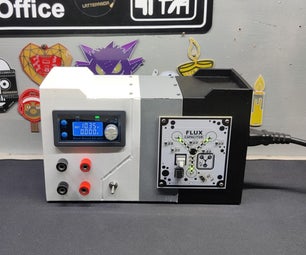Introduction: RC FPV-Trike With Rear Steering Wheel
As I had some spare parts from my first FPV Rover, I've decided to build a RC car. But it shouldn't be just a standard RC car. Therefore I've designed a trike with a rear steering wheel.
Follow me on Instagram for latest news
https://www.instagram.com/ernie_meets_bert/
Step 1: Parts to Print
Find all parts you need on Thingiverse
https://www.thingiverse.com/thing:3669829
I've printed all parts (beside the tires) in PETG. But any material is fine here. Tires are printed in TPU.
1x Body
1x Top part 1
1x Top part 2
1x Front fender left
1x Front fender right
1x Rear fender
1x Servo arm
2x Servo extension
1x Rear wheel attachment (Support needed)
1x Rear wheel
1x Rear tire (use TPU)
2x Front wheel
2x Front tire (use TPU)
Step 2: Parts You Need (BOM)
Here is the list with all necessary parts for the rover
2x Motors
2x ESC
1x Servo
1x 3S Battery
2x JST plugs
2x 12mm x 8mm x 3,5mm bearings
12x M2 x 10mm screws
4x M3 nuts
4x M3 x 25mm button head screws
2x M3 x 14mm button head screws
To Power the AIO FPV Cam use a 1s battery or a step down converter
1x Rubber band (to secure the camera)
CA glue, hot glue gun, screw driver, some cable, soldering station
Step 3: Preparing Motors
The ESCs have a switch which you can keep if you want. If not, unsolder the two cables and bypass the two pins. So the ESC is always "on".
Solder the JST plug to the motor. You can solder the ESC directly to the motor, but it's easier to replace with the plug if something broken.
Add 4 M3 nuts to the body and attach the motors with 4x M3 x 25mm button head screws
Step 4: Add Magnets to Body and Top
You need 16 magnets 6mm x 3mm for the body and the top.
Use CA glue to keep them in place.
Step 5: Rear Wheel Attachment
The rear wheel has build-in-support on one side where a bearing belongs to. Cut this with an exactor knife and open the hole
Step 6: Prepare Servo and Servo Arm
Cut the edges from the original servo arm to fit into the enlarged servo arm.
Step 7: Attach Rear Wheel to Body
Step 8: Front Wheels and Electronics
Attach the front wheels to the motors. They should press-fit to the motor shaft.
To secure the ESC to the body use hot glue, velcro or double sided tape.
Step 9: FPV-Camera and GoPro Mount (optional)
If you use a FPV-Camera, I do recommend to use one of the protectors. I use the one where I can attach the GoPro to it.
To secure the FPV-Camera, you'll need one rubber band.
In my case, the camera is powered by an own battery. It is a small 1s from an Eachine E010. For this, the top has a compartment where you can place the battery.
If you want to power the FPV-Camera from the trikes battery, you'll need a step-down-converter, as the trike uses 3s.











